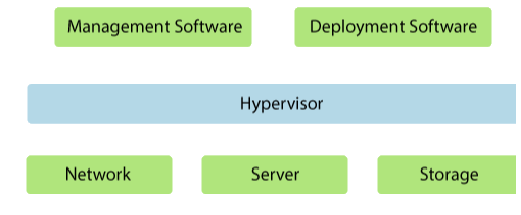Cloud Computing Infrastructure
Cloud Computing Infrastructure
Cloud infrastructure contains storage devices, servers, networks, cloud management software, deployment software, and platform virtualization.

Components of Cloud Infrastructure
The components of cloud infrastructure are:
- Management software
- Deployment software
- Hypervisor
- Network
- Server
- Storage
Management Software: - Management software supports to construct and maintain the infrastructure.
Deployment Software: - Deployment software is used for deploying and merging the application on the cloud.
Hypervisor: - Hypervisor is also known as a virtual machine monitor. Hypervisor is software which acts like a virtual machine manager. It permits to share the single physical instance of cloud resources between various tenants.
There are two types of hypervisor:
- Native hypervisor
- Hosted hypervisor
Network: - Network is the main component of cloud technology. It permits customers to connect to the cloud through the internet. It is possible to deliver a network as a utility via the internet, which means the user can customize the network route and the protocol.
Server: - The server is that component of cloud infrastructure which supports to compute the resource sharing and provides services like monitoring the resources, resource allocation, and de-allocation, providing security etc.
Storage: - There are various copies of data that are kept stored in the cloud so that if in any case, any resource fails, then the data can be retrieved from another one. So, storage is another important component of cloud infrastructure.
Infrastructural Constraints
The infrastructural constraints are:
- Transparency
- Scalability
- Intelligent monitoring
- Security
Transparency: - Virtualization provides the facility of resource sharing in cloud environment. But in this, it is not possible to fulfill the demand with single resource, that’s why transparency in resources, load balancing and application are needed so that scaling is done efficiently when required.
Scalability: - Scaling up an application delivery solution is not an easy task like scaling up an application because it consists configuration overhead or even re-architecting the network. So, the application delivery solution is required to be scalable that will need the virtual infrastructure so that resource can be provisioned and de-provisioned in an easy way.
Intelligent Monitoring: - Application solution delivery will need to be capable of intelligent monitoring to achieve transparency and scalability.
Security:-The cloud's super data center should be safely architecture. There is also a need to protect the control node, an entry point in the mega data center.